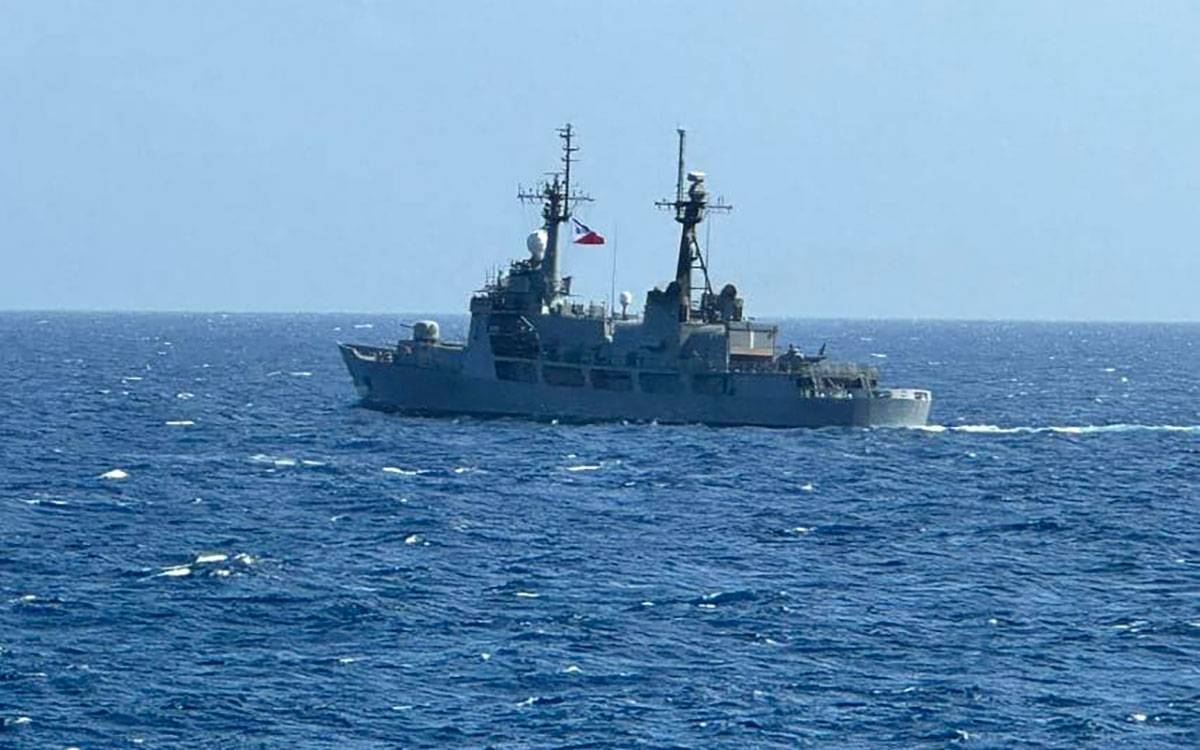Naval vessels from the Philippines and the United States recently concluded a two-day joint patrol in the seas within the Philippines’ exclusive economic zone (EEZ), despite being closely monitored by Chinese ships. This Maritime Cooperative Activity (MAC) by the Philippine and US navies attracted the attention of two Chinese People’s Liberation Army (PLA) destroyers, which attempted to approach two Philippine ships from behind.
In response to the Chinese vessels’ actions, the Philippine ships issued challenges, but the Chinese ships refused to respond. However, upon realizing the presence of the USS aircraft carrier Carl Vinson and its destroyer escorts, the Chinese vessels decided to move away.
This joint patrol exercise marks the second time the Philippines and the United States have engaged in such activities since last year. Both allies have plans for similar exercises in the South China Sea later this year. The participating vessels included the US Carrier Strike Group 1, which comprises the Carl Vinson, the guided-missile cruiser USS Princeton, and the guided missile destroyers USS Kidd and USS Street. Alongside them, the Philippine Navy’s Gregorio del Pilar, Ramon Alcaraz, and Davao del Sur cruised in unison.
Colonel Xerxes Trinidad, the Armed Forces of the Philippines (AFP) Public Affairs chief, stated that the final day of the exercise involved cross-deck maneuvers, which entailed personnel transfers between US and Philippine vessels. Trinidad emphasized that these patrols showcased the seamless cooperation between the AFP and the United States Indo-Pacific Command (Usindopacom).
General Romeo S. Brawner Jr., the AFP Chief of Staff, highlighted the significance of the exercises, stating that they allowed for the exchange of best practices and improved the proficiency of both armed forces in responding to potential threats in the maritime domain. Rear Admiral Carlos Sardiello, the Commander of Carrier Strike Group 1, echoed this sentiment, emphasizing that the exercises enhance combined readiness and capabilities in support of a free and open Indo-Pacific.
These joint naval patrols not only strengthen the partnership between the Philippines and the United States but also provide the Philippine Navy with opportunities to collaborate with allied forces from other nations. During these exercises, the Philippine Navy had the chance to work alongside the Royal Australian Navy, Royal Canadian Navy, and Japan Maritime Self-Defense Force.
It is important to note that the Indo-Pacific region falls within the area of operation of the US’ 7th Fleet. By conducting joint patrols and exercises in this region, the Philippines and the United States demonstrate their commitment to maintaining peace, stability, and freedom of navigation in the area.
Despite the presence of Chinese vessels shadowing the joint patrols, the successful completion of these exercises showcases the resolve and capability of the Philippines and the United States to work together in safeguarding their respective maritime interests. As tensions persist in the South China Sea, such cooperative activities play a crucial role in ensuring the security and stability of the region.
Source: The Manila Times








